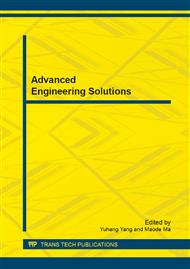p.146
p.151
p.156
p.161
p.165
p.169
p.173
p.177
p.181
Precise Measurement of Temperature Based on Self-Correcting Technique
Abstract:
On the basis of the analysis of the difficulties in the meteorological measurement, this paper proposes a three resistance measurement method based on the self-correcting technique, through comparing the relative size of the three groups of measuring signal for the desired measuring value. The advantage of this method is to counteract the effects of drift in the measurement circuit, which can achieve high precision results in the bad external environment. This paper gives a comparison of measured data. The method has been verified in practical application.
Info:
Periodical:
Pages:
165-168
Citation:
Online since:
July 2014
Authors:
Keywords:
Price:
Сopyright:
© 2014 Trans Tech Publications Ltd. All Rights Reserved
Share:
Citation:


